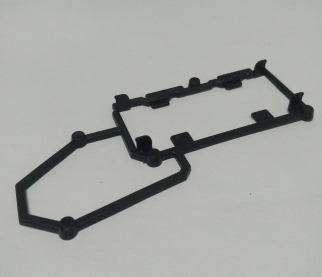Screening is the use of a sieve to divide a material with a wide particle size range into several levels according to the particle size.
Grading is the division of different fractions depending on the rate at which the material settles in the medium (water or air).
5毫米的物料。 The sieving is generally used for a thicker material, that is, a material greater than 0.25 mm. Finer materials, ie materials less than 0.2 mm, are graded. However, in recent years, fine screens have been applied to the classification of grinding products at home and abroad, and the classification efficiency is generally high.
Screening operations can be divided into six categories depending on the purpose of screening.
( 1) Independent screening The purpose is to obtain a final product that is suitable for the user's requirements. For example, black metallurgical industry, often the higher iron-rich iron ore containing sieved into different size fractions, qualified bulk ore into the blast furnace, the iron ore fines or agglomerates by sintering furnace into blocks .
(2) secondary screening is mainly used in this screening beneficiation plant crushing operations, operations for factories play a supporting role. Generally, there are pre-screening and screening screening.
Pre-screening refers to the screening of the ore before it enters the crusher . The sieve is used to separate the part from the ore that is already qualified for the crusher, such as the sieve and the sieve installed before the coarse crusher. The lower product can be crushed without being crushed by a coarse crusher, which can reduce the amount of ore entering the crusher and increase the throughput of the crusher.
Inspection screening refers to the screening after the ore has been crushed. The purpose is to ensure that the final crushed product meets the particle size requirements of the grinding operation, and the unqualified crushed product is returned to the crushing operation, such as before the medium and fine crusher. Screening, which plays the role of pre-screening and screening. Therefore, screening and screening can improve the utilization of the crushing equipment, similar to the classifier and the grinding machine to form a closed loop operation to improve the grinding efficiency.
(3) Preparing for screening The purpose is to prepare for the next job. For example, the re-election plant should sift and classify the materials before jigging, and classify the coarse, medium and fine products into graded jigging.
(4) Selective screening If the distribution of useful components in the material varies greatly at each particle level, it can be sieved and classified to obtain different particle sizes, and the low-quality particles are screened out, thereby correspondingly improving the grade of the material. . For example, the fine sieving of some iron concentrate re-grinding has the function of selective sieving, and the sieving can improve the grade of iron concentrate.
(5) Dewatering screening to remove the moisture from the material.
(6) Desizing Screen The sieve for removing fine particles in the material.

According to the characteristics of molding, injection mold and thermoplastic plastic mold are divided into two types. According to the molding process, it can be divided into transfer mold, blow mold, casting mold, hot molding mold, hot pressing mold (compression mold), injection mold, etc. Among them, the hot pressing mold can be divided into three types, i.e., overflow, semi-overflow and non-overflow, and the injection mold can be divided into two types, i.e., cold runner mold and hot runner mold. It can be divided into two types: mobile type and fixed type.
Plastic Injection Accessories,Injection Molded Leakproof Accessories,Plastic Handles For Boxes,Black Plastic Handles,Plastic Injection Molding Service
Timeplex Industrial Limited , https://www.catimeplexhk.com